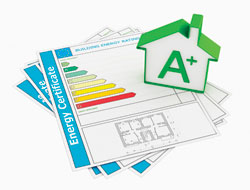By Dave Yelovich
Green is the buzzword that has captured the industry. So how do you answer the question, “Is this house green?” In order to properly answer this question we must first come to an understanding of what “green” really is. To some it simply means the house is energy efficient. To others it goes beyond energy to include features like efficient water fixtures, how the site was incorporated into the design of the home project, and even how the occupants of the home were trained to properly use and maintain the home.
The “Green / Energy Certifications” portion of the MLS lists several ways a home can be certified as green. Although the programs listed are unique they all have several things in common. As mentioned above they all incorporate energy efficiency at the heart of their program. In addition site design, resource efficiency, water management, indoo environmental quality, and occupant education are all aspects of a green program. Energy efficiency is only one aspect of a green program.
There are seven check boxes in this part of the MLS. Energy Star is probably the most recognizable label on the list. However, the Energy Star home of just five years ago is vastly different from Energy Star homes being built today. Currently, the EPA is phasing in what they call Energy Star Version 3.0. Homes built to this standard go beyond the traditional energy efficient home and will include green features like those noted above. Environments for Living and LEED for Homes are also very respectable programs. There are many other green programs. Most of these tend to be localized programs. No matter what program it is – unless you have paperwork to prove it is certified do not check these boxes.
The only program to carry an independent approval is the National Green Building Standard. The National Association of Home Builders teamed up with those who write the building codes (International Code Council) and together they co-wrote this standard. They then submitted it to ANSI (American National Standards Institute) for their certification. It was published in 2008.
Also found in this section of the MLS is a reference to “Home Energy Rating / HERS.” This is a score that refers to how energy efficient a house may be as compared to a certain energy code. For instance, if a house had a HERS score of 85 you could say that home was 15% better than the code it was being compared to. The lower a HERS score the more efficient the home is. “Other Energy Report” will refer to this type of scoring system. They may have names like RemRate, MecCheck, ResCheck, and others but they are all computer generated scores comparing a house to an energy code.
You may need a program to keep all the green programs straight. However, you now know being green is more than being energy efficient. If it is truly green – that house has a leg up on the competition.
Since graduating from the Texas A & M Construction Science Department Dave has been a leader in the construction industry for over 26 years. He is a licensed Professional Inspector in the State of Texas. He holds the designations of Certified Graduate Builder and Certified Green Professional from the National Association of Home Builders. He is ICC Code Certified. He is an instructor for the NAHB, TREC, OSHA and others.


